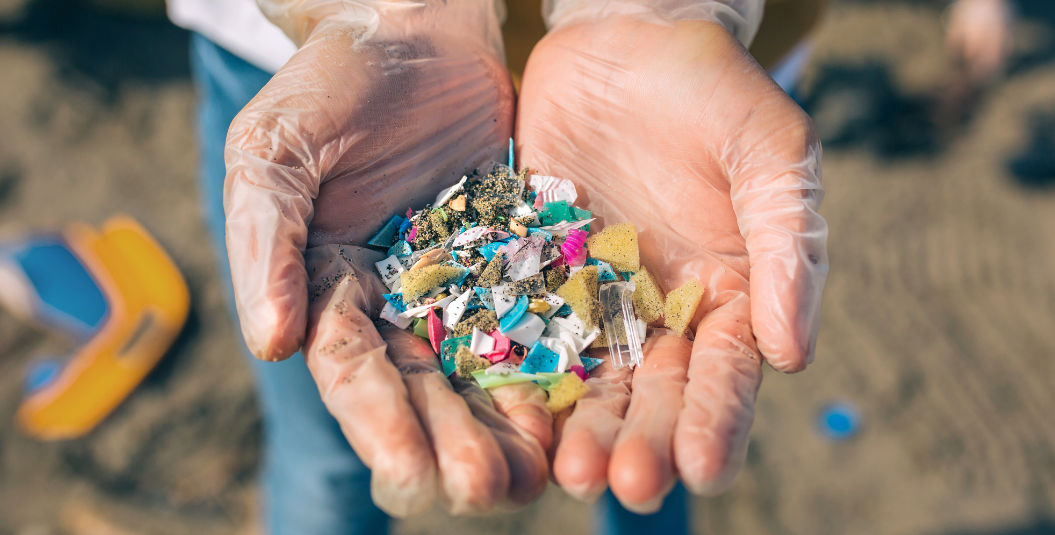Tiny but deadly – time for the EU to tackle microplastic pollution
Microplastics – and the even smaller nanoplastics – are everywhere: in the environment, in the ocean, in our food... Despite this, policymakers have long overlooked microplastic pollution. The tide is slowly changing: the European Union is seeking advice from citizens on how to confront this problem. As part of the Rethink Plastic alliance, ECOS has called on policymakers to tackle microplastics at the source – before they are even created.

Microplastics are synthetic plastic particles smaller than 5mm. In the EU alone, between 75,000 and 300,000 tonnes of microplastics are released into the environment every year. Worse still, microplastics are pervasive, persistent and accumulate in the environment. How can we tackle microplastic pollution? The first step is preventive measures. We must reduce production volumes and carefully choose where it is that we really need plastics.
Binding, effective and sustainable solutions must be implemented now. Policymakers must prioritise the prevention of microplastic pollution and minimise its impacts on our global ecosystems and climate. Microplastic pollution is set to become a runaway challenge if mandatory preventive measures are not urgently put in place.
The EU must fight microplastics… at source
Unfortunately, current trends are not favourable. Plastic pollution worldwide is expected to increase by 33-36% by 2025 – and even more by 2030.
To this day, there is no single European law that comprehensively covers microplastics. The supply chain, producers and manufacturers are held accountable neither for the microplastics they generate, nor for those unintentionally released by their products.
Faced with this extremely serious situation, the European Commission is currently looking for knowledge on microplastic pollution. Until 17 May, the Commission is running a public consultation on measures aiming to reduce the presence of unintentionally released microplastics in the environment. The scope was initially focused on tyres, textiles, and plastic pellets, but has now been extended to include geotextiles, paints and detergents. This is a huge opportunity for the EU to take significant steps to address and stop microplastic pollution with mandatory regulatory (and long overdue) actions.
As part of Break Free From Plastic and the Rethink Plastic alliance, ECOS has called for ambitious and binding policy measures at the EU level to fight microplastic pollution. We believe that prevention and reduction at the source are the two best strategies. It will no longer suffice to focus on damage control measures.
Micro-, nano- and equally toxic
In our response to the Commission’s call for evidence, we paid special attention to the dangers posed by the micro- and nanoplastics that are unintentionally released into the environment. Nanoplastics are particularly worrying, given the risks they pose for human health, and their persistence and widespread presence, making it virtually impossible to eliminate them from the environment.
Toxicity is another crucial aspect that needs to be tackled together with microplastic pollution. The EU needs to adopt measures to address the toxicity of microplastic additives and increase the transparency and traceability of products, materials, chemicals and ingredients.
We need a regulatory approach, including changes in product design, production processes, and mandatory practices at the supply chain level. Policies should include binding measures across all responsible sectors.
If microplastic pollution is left unchecked, it will pose a ‘widespread risk within a century’, according to SAPEA, a group of independent scientists advising EU commissioners. It might seem lightyears away – but this is only an illusion. The threat is real, and if we do not deal with the problem today, the next generations will suffer dire consequences.
We need to slow down our material and resource use, as well as reduce our production and consumption footprint. the design, composition, and ingredients of plastic products across sectors.
We hope the ongoing Commission’s consultation is the beginning of decisive action against microplastics, one of the most dangerous polluters on our planet.

 By
By 
